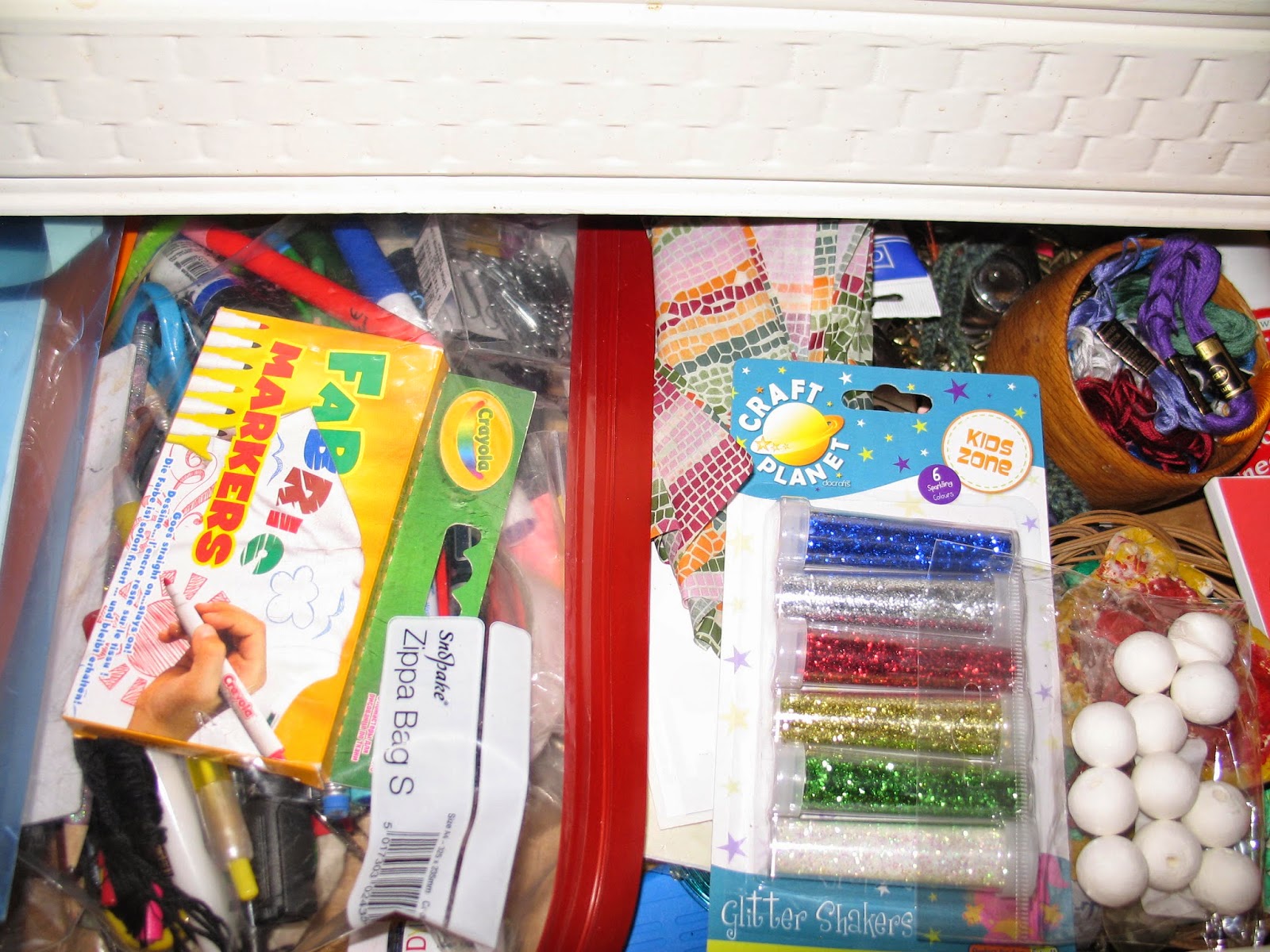If you want your children to grow up in a creative and crafty environment, that doesn't mean that you need to have your own branch of Hobbycraft in your house. You can foster creativity with very little. Or you can have a few basic supplies always on hand, and supplement them with a trip to the craft shops (also many bargains to be found on the internet) for specific projects.
Here's your basic toolkit:
- Paper - a selection. If all you can manage to get hold of on a budget is paper from the office that's been used on one side, then that will do fine, particularly for younger kids that go through SO MUCH PAPER! Once they get older then it's nice to have different types, colours and patterns of paper, tissue paper, crepe paper and card for different projects.
- Pencils / crayons / pens / paint - it doesn't really matter what you have on offer, as long as the children have access to mark-making tools. Other alternatives are white board and pens, or chalk board and chalk. As they get older and have experience of different projects and techniques you can throw pastels, watercolours, fabric pens and all sorts into the mix.
- Glue stick / PVA / sticky tape - children will need to experiment with different ways of joining materials. Bug (almost 4) is a bit of a nightmare with sticky tape, ending up pretty much wrapped up as a parcel herself when she tries to use it, and prefers PVA (lots) or a glue stick. C is a bit more experienced with sticky tape, and uses it for many purposes, but hasn't quite got the hang of which sticking material works best for which uses. As they get older, or for different projects, you can start introducing them to staples, split pins, glue guns, nails and screws and many other methods of joining.
- Scrap materials - We have two types of scrap materials. Larger materials are available in the recycle bin. I collect jars, tin cans, plastic milk bottles, lids, plastic cartons, cardboard boxes, newspaper, egg boxes, old magazines and anything else recyclable in a plastic box in the kitchen and then take it out to the recycling dustbin whenever it gets full. The children have free access to this plastic box for craft materials, have been taught to watch out for sharp tin edges, and can often be found sifting through for the right sized cardboard box or milk bottle lid for whatever they are making today. If they have something specific in mind (toothpaste box or egg box) they sometimes have to wait, but unless the box has just been emptied, they usually find what they are looking for. They also each have a plastic "zippy bag" A4 poly pocket. In there go pictures we've cut from magazines or catalogues, bits of ribbon or trimmings from gift wrap, bits of shiny paper, lids, scraps of wrapping paper, foam, straws, felt, pompoms, pipe cleaners or in fact anything that catches their eye and they think might be useful later, and also any leftover craft materials from previous projects.
This is your basic crafting kit, and with this children can get very creative. You can then add materials for particular projects and optional extras. Here are a few other ideas that might inspire projects of their own:
- googly eyes
- buttons and beads
- sequins and shiny bits
- fabric trimmings, ribbons and rick rack
- fabric scraps
- needles and thread (and some basic sewing skills)
- wool scraps
- feathers
- air-drying clay, plasticine or play dough
- off cuts of wood (and some basic woodwork skills)
Once you get crafting the options are endless and a quick glance at Pinterest with for example "dinosaur crafts" in the search box will provide plenty of inspiration using any number of different craft materials.
The key here is to get crafting and have some fun. Don't go out and buy a "project kit", just get hold of some materials and let your imaginations go wild and foster real creativity.




No comments:
Post a Comment